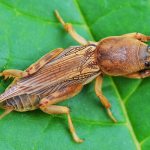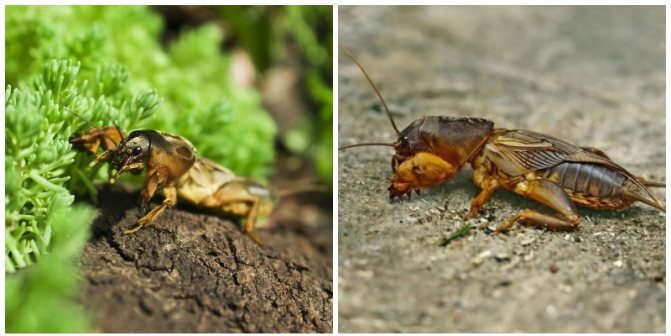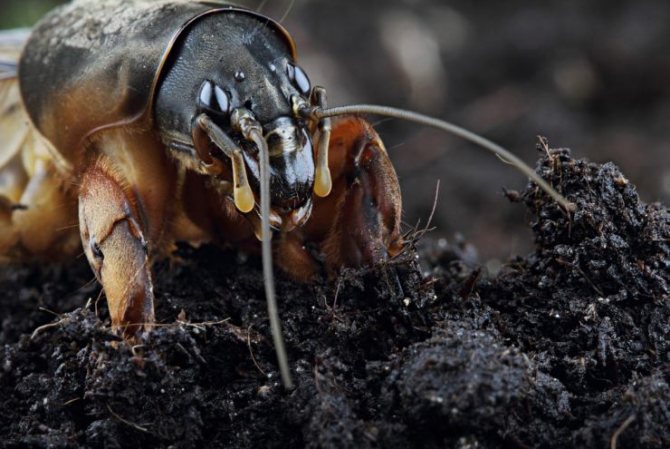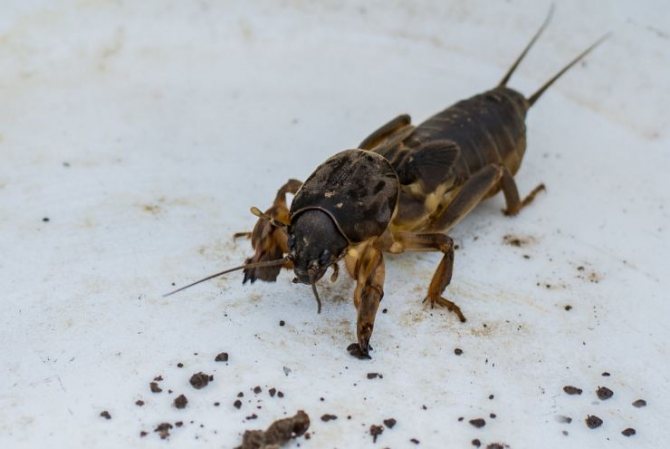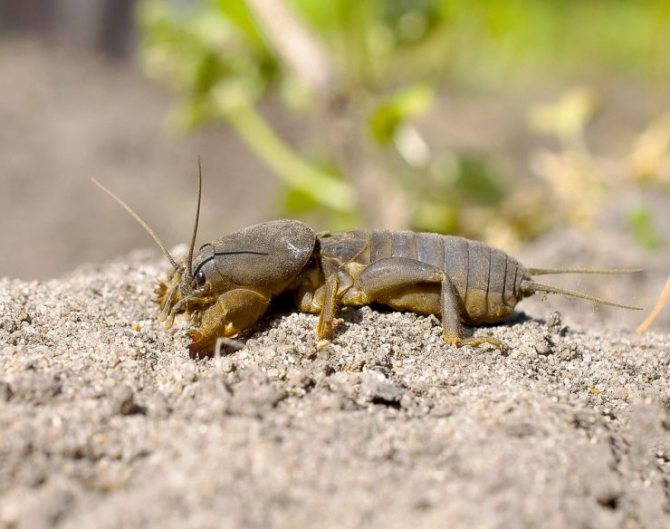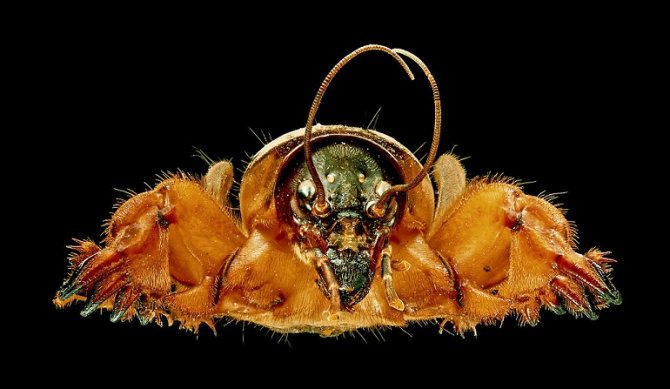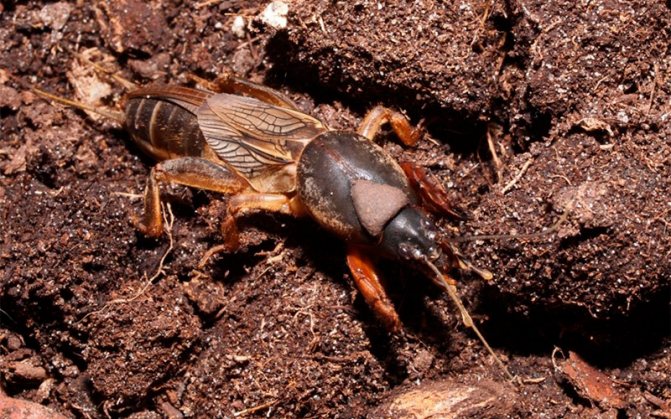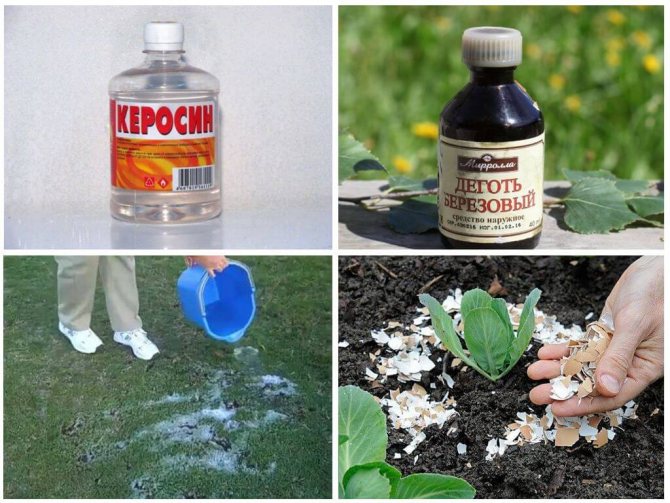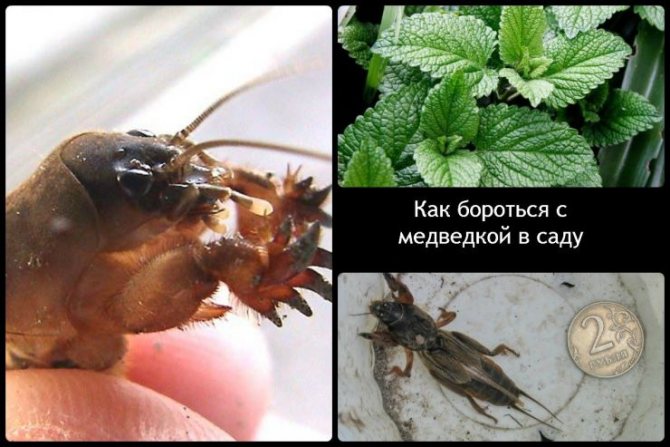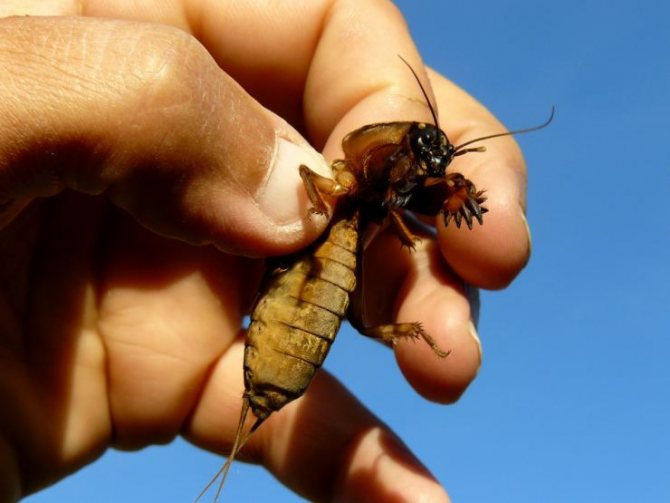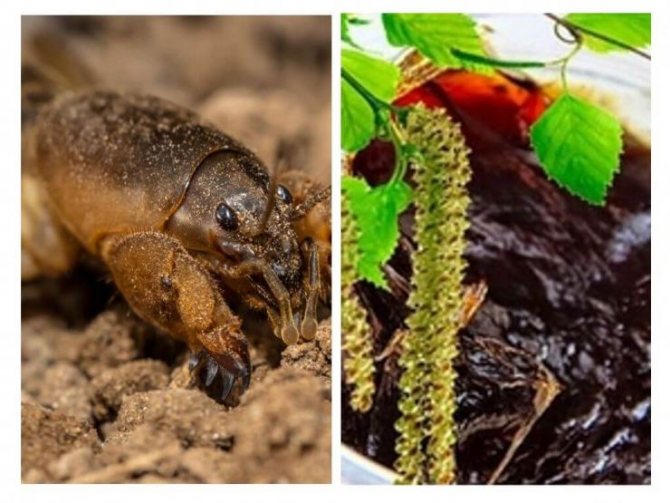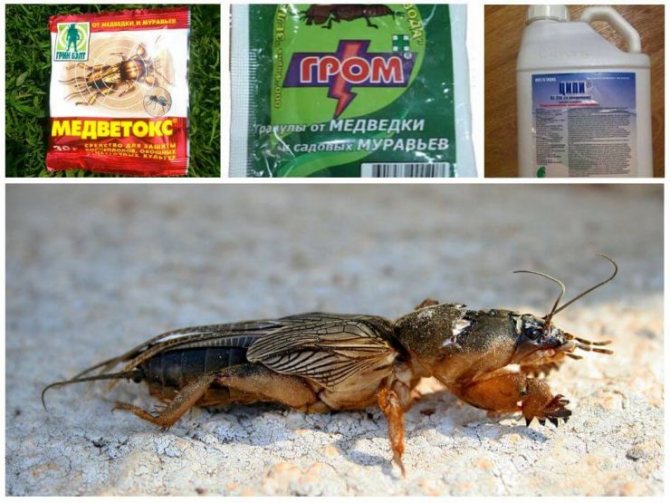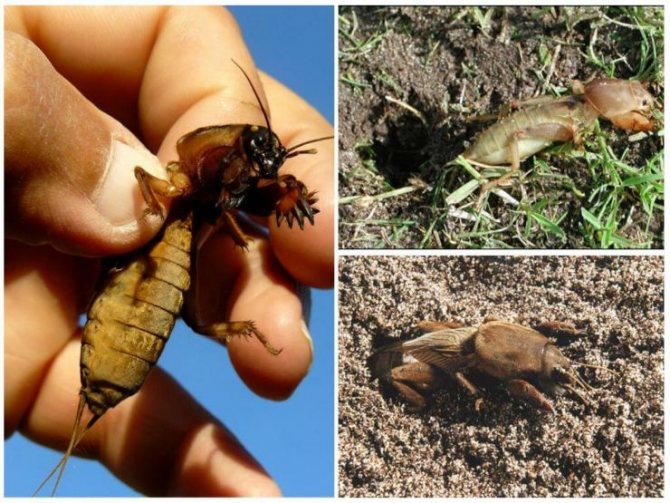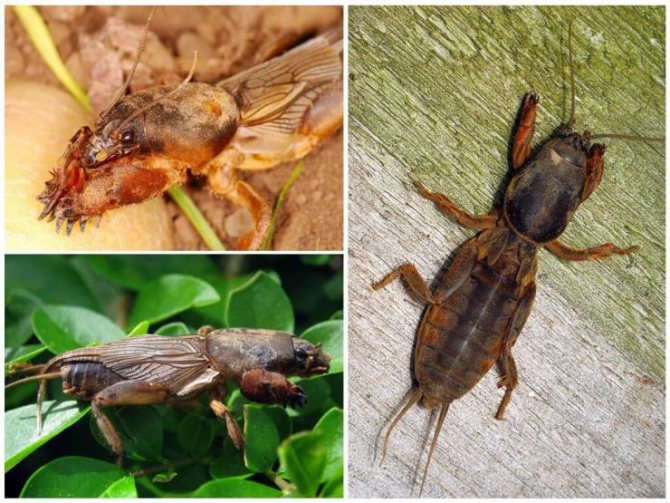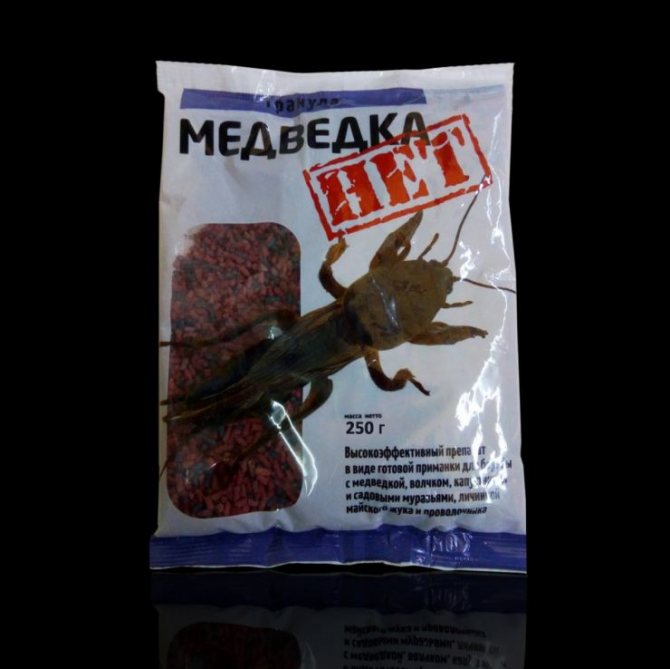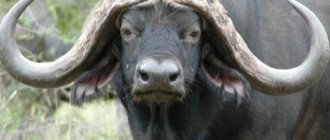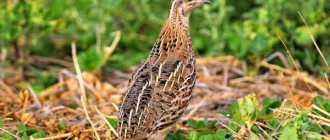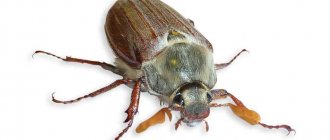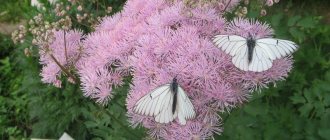Origin of the species and description

Photo: Medvedka
Medvedka belongs to large insects. For the love of cabbage, the people received the nickname cabbage or earth crayfish. Medvedka belongs to a number of rectangular arthropods, insects of the order long-wattled, superfamily of crickets, family of Medvedka, subfamily of Medvedka.
The insect got its scientific name due to its large size and brown-brown color. The frightening appearance of a large insect with massive clawed paws resembles a bear. In their natural habitat, scientists have counted up to 110 species of the Gryllotalpidae bear family, very similar in lifestyle and appearance. The common bear species is most widespread throughout the planet.
Video: Medvedka
Gryllotalpa, the name of the bear in Latin, translates as a mole cricket. The insect is endowed with the habits of a mole, because it spends most of its life in the ground and breaks through tunnels there. But with a cricket, they are united by the ability to reproduce a sound that resembles a chirp.
Distinctive features of the bear:
- usually the body length of an insect is 5 cm, but species with large dimensions are found;
- in the insect, the front paws are formed in the form of powerful digging claws;
- nature has endowed with powerful jaws. They are not dangerous to humans;
- can dig holes and fly. It flies only in warm weather;
- make chirping sounds by rubbing their wings during the mating season. Males attract females in this way.
Interesting fact: Medvedka has the skills of an excellent swimmer. Able to swim long distances and overcome obstacles in the water.
How to deal: effective methods


Getting rid of the bear is quite difficult, as it requires special and everyday attention to the garden. If you take this problem seriously, then you can get rid of the bear once and for all. It is necessary to engage not only in the fight against the pest, but also to take preventive measures, along with proper agricultural technology.
If a bear appeared on the site, then you can forget about a calm, carefree life, otherwise you can be left without most of the harvest. Proper soil cultivation reduces the risk of contamination of the site with this dangerous pest.
Setting traps
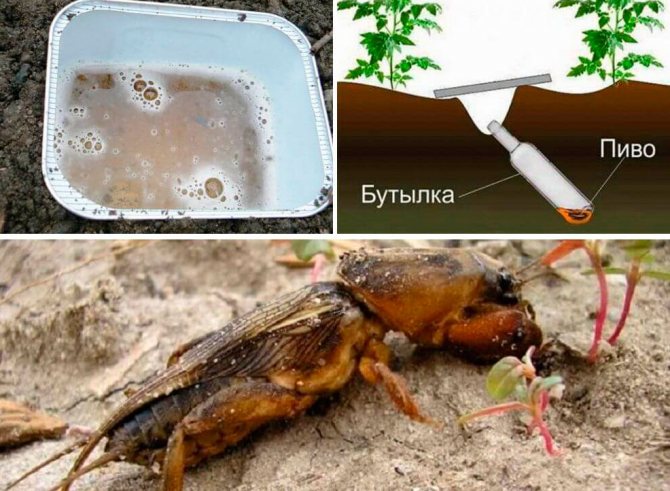

If you know the features of the life of an earth crayfish, then the fight against it is greatly simplified. Over the years, a person has been able to come up with a lot of ways to effectively fight.
Effective cabbage traps:
- Dung heaps... These pests are not averse to overwintering inside objects that represent zones of organic fertilizers. As a rule, the owners put up various waste, leaves, green mass so that they rot and turn into fertilizer the next year. To catch the pest, you need to dig a hole with a depth, width and length equal to 50 cm. After that, the hole is filled with manure, you just have to wait for real frosts. In such conditions, all the contents are taken out of the pit and scattered around the garden. As a rule, insects die, especially since they are in a state of hibernation. With the arrival of spring, many eggs can be found in the manure traps, which are immediately destroyed.
- Beer traps... Medvedka gladly climbs into a container filled with beer.The trap is made as follows: a glass jar with a capacity of 0.5 liters is taken and buried in the ground to a depth so that the jar looks out a little. A third of it needs to be filled with beer and covered with an object, leaving a small gap, sufficient for the bear to get inside. All that remains is to check the traps for pests from time to time. The more traps are set, the greater the effect of them.
- Heat traps... Medvedka loves warm places, loves to bask in the sun, so her love for such places can be used against her. It is enough to artificially create such areas for the pest. For this, pieces of black materials that attract heat are suitable. Cloth or plastic wrap (black) will do. You can put bait under them, in the form of pieces of chopped potatoes. This method of struggle allows you to quickly reduce the population of bears in the garden.
Folk methods of struggle
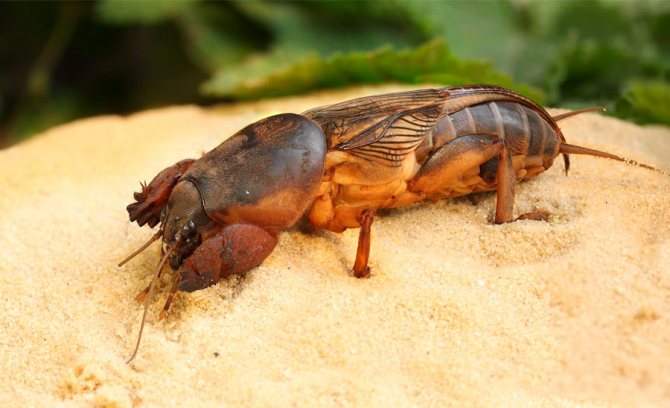

Medvedka is a dangerous pest that greatly annoys the owners. If you do nothing, you can be left without a crop at all. Despite this, there are a number of proven, popular methods of struggle that help get rid of cabbage. It is enough to stock up on patience, desire and some, sometimes unnecessary materials.
For example:
- Install a barrier from plastic bottles... It is considered an effective tool that does not require almost any expenditure of funds, but you will have to spend time. Any old plastic bottles that are cut into rings are suitable for this. These rings are installed around a young plant so that they rise about 5 cm above ground level. Plastic bottles are beyond the power of even bears. Thanks to the plastic rings, it will be possible to protect the lower part of the plants.
- Soap solution... An effective way of fighting that does not require large financial costs. You need to take 50 g of washing powder or 20 g of soap and dilute them in 1 bucket of water. This product is poured into holes, after which the pests get out, where they are caught. You should not do a lot of concentration, as this can harm the plants.
- The use of vegetable oil... The oil is used as follows: half a teaspoon of vegetable oil is poured into the hole, after which water is fed into the hole from a hose. After such a procedure, the bears either die or try to get out. It remains to catch and destroy them.
- The use of nylon stockings... With the help of such a strange method of struggle, they simply protect the root system of plants. The stocking is put on the roots of young plants before planting. With an increase in the roots, the nylon stocking also increases in size, protecting them from omnivorous pests. If the bear gnaws at the small parts of the roots that have sprouted through the stocking, then this will not bring much harm to the plant.
Chemical control agents
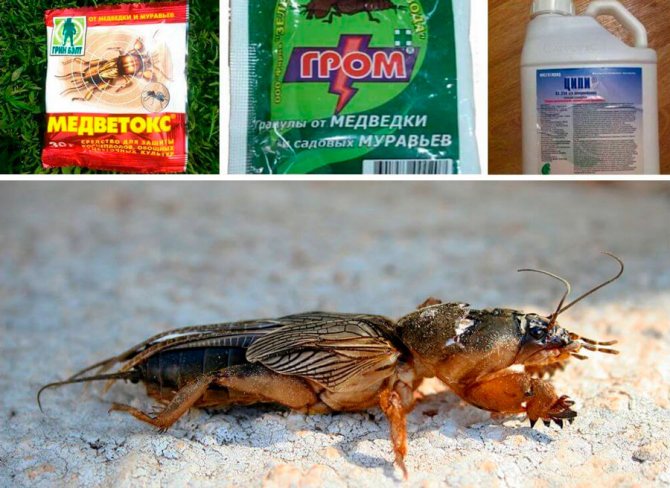

The use of chemical means of control is justified in the case when folk methods do not allow coping with the invasion of the bear. If the cabbage is multiplying fast enough, then it is practically impossible to catch all of them.
In this case, modern pesticides and insecticides come to the rescue. If you start the fight in a timely manner, it will be possible to destroy up to 90% of pests, including eggs and larvae. Bears eat poisonous components and die. Similar products are sold in hardware stores and other specialized outlets.
Effective drugs include:
- Thunder.
- Phenaxin Plus.
- Medvegon.
- Grizzly.
- Medvedoks.
- Rembeck.
The effectiveness of the action depends on the correct application. In addition, you need to think about how not to harm yourself and your pets.
Therefore:
- First of all, you should decide on the places where pests live.
- About 4 granules should be placed in each of the underground passages.
- The product also crumbles in places where the bear appears.
- It is very important that the pellets are covered with a layer of earth so that they cannot be tasted by pets and poultry.
On a note! Chemical agents against cabbage are characterized as highly or moderately toxic, therefore, working with these substances requires caution. To do this, it is better to use personal protective equipment. Unwanted clothing, shoes, hats, gloves, goggles, and a respirator will do.
Ultrasonic scarers
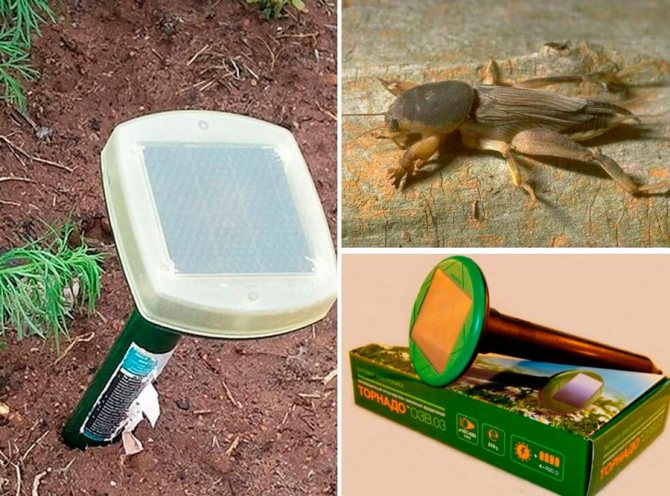

Such devices operate on the principle of generating and emitting ultrasonic waves. Scientists have found that these waves have a negative effect on some animals, as well as on insects, including the bear. Under the influence of ultrasonic waves, pests experience discomfort, lose orientation, stop feeding and multiply. In any case, they try to leave the territory where the repeller is installed. In about a week, there will be no trace of the pests.
The following devices can be used:
- Grad.
- Riddex.
- Typhoon.
- Post reject.
The maximum effect can be obtained when pest control is carried out jointly with neighbors. If the device stops working, then the pests will reappear, lay eggs and the process of destroying the crop will begin.
It is best to consult your dealer before purchasing such devices, as ultrasonic devices work on pets. Therefore, you need to think carefully so as not to endanger your pets.
Appearance and features
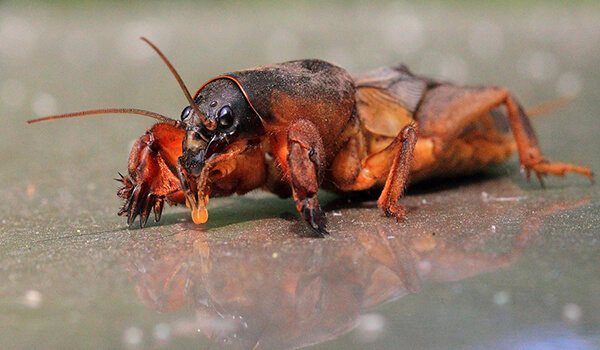

Photo: What a bear looks like
Bears are fairly large insects. The length of their body can reach from 3.5 to 5 cm, and the width - from 1.1 to 1.6 cm.On the outside, the body of the bear is colored brown with an admixture of brown, and the inside is yellow with a tinge of brown. The whole body of the cabbage is covered with fine hairs. The insect's head is on the same axis with the body, that is, the body is its continuation. In front of the head, the bear has powerful jaws. Near the jaws are two pairs of tentacles.
The eyes of the bear have a faceted structure and are clearly visible on the head. On the head there is a thread-like mustache that extends behind the front back. The pronotum in the bear is a distinctive feature of the insect. The head with the front part of the body of the insect is covered with a dense shell and a special device in order to push and compact the earth during digging. The abdomen of the bear is rather thick, about 1 cm in diameter. The anal and genital plates are located on its upper part.
By nature, cabbage girls do not have egg-laying. On the last segment of the abdomen, the bears have special appendages that resemble small antennae in appearance. All bears have two pairs of wings. Females differ from males in different veins on the wings. Also, there are individuals without wings, but these are extremely rare. The so-called "ears" of the bear, as well as other individuals belonging to its subspecies, are narrow and elongated, and are located on the shins of the forelegs. The hind legs of the insect have several spines and are intended for movement, and the front legs are powerful, with tentacles and are intended for digging trenches and burrows.
Where does the bear live?


Photo: Medvedka in Russia
The insect's habitat is quite extensive. Medvedka is unpretentious, the only thing that she is afraid of is frost, and the desert is not suitable for her either. Inhabits almost the entire territory of Eurasia except the Scandinavian countries, North Africa, both Americas, Australia. But she did not conquer Antarctica and the northern Arctic territories.
A favorable place to live for the bear is a meadow and a river floodplain. Insects prefer wet areas.Underground tunnels, wetlands and irrigation canals are favorite habitats. It is also easy to find a bear in melons and gourds, as well as in places that are distinguished by deep groundwater.
Any type of soil is suitable for the bear, the best option is loose, warm and moist soil, saturated with organic fertilizers. Under the ground, the insect digs passages that create a whole system that performs a transport, protective and ventilation function.
Interesting fact: Medvedka digs holes of perfectly regular oval shape.
In a humid habitat, the bear crawls very quickly. But if the habitat becomes no longer habitable for her, the bear is forced to move to new territory. She often moves at night on water, land or air.
Interesting fact: Medvedka loves to live in dung heaps. Well-warmed wet manure (mullein) is an excellent option for them.
Now you know where the bear lives. Let's see what she eats.
Prevention measures
Any problem is better prevented than solved. Of course, you can't foresee everything, but if there is a risk of a bear visiting the garden (for example, seen in neighboring areas), then it is better to play it safe.
Scare off with rotten fish
This method requires a balanced approach, since an unpleasant smell can still annoy a person for some time, and in addition, rotten foods are often dug up by cats and dogs. But rotten fish works effectively against earth crawfish. Foul-smelling pieces or small spoiled fish are placed in the holes during planting or buried around the perimeter. In addition to the task of scaring away, they will serve as an additional fertilizer.
Needles to help
The coniferous smell is one of those that the bear also does not tolerate.
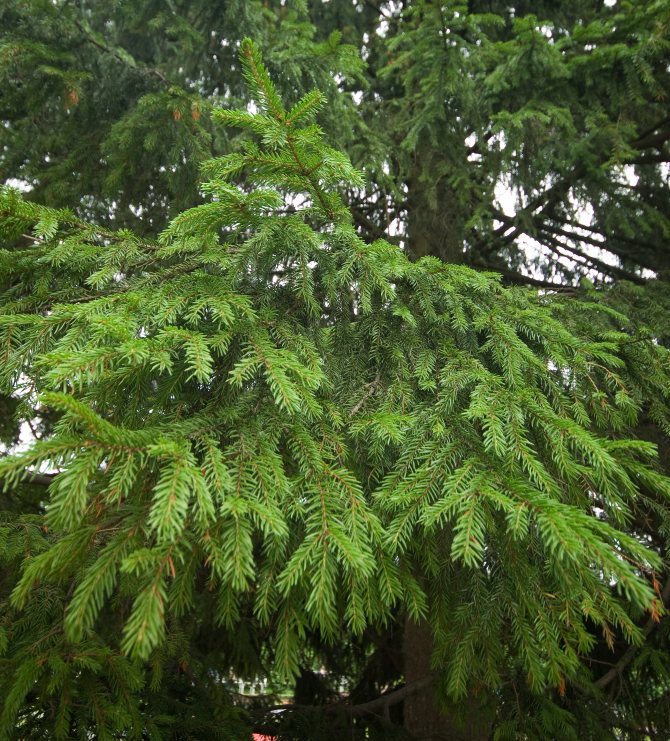

Lay out coniferous spruce branches, slightly sprinkling it with earth for a longer preservation of the aroma, add coniferous needles to the holes when planting - and the pest will bypass them.
Dung traps
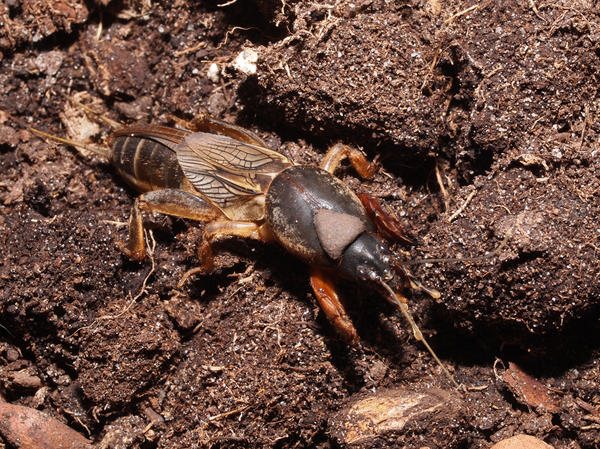

A very effective, safe and convenient way to deal with a bear. It is based on her passion for dung as a source of heat at any time of the year. They work best in spring and autumn, when the soil is not yet sufficiently warmed up. In the garden, trapping pits with a diameter and depth of 50 cm are made, which are lined with plastic wrap along the bottom. A shovel of fresh manure is placed on it and the hole is buried. After some time (in the fall - after freezing temperatures are established constantly), the traps dig up and carefully take out the "crop" of pests along with the film. Before winter, you can not use cellophane, but simply dig a hole and scatter its contents over the frozen ground - the insects will die, since at this time they are practically immobilized.
What does the bear eat?
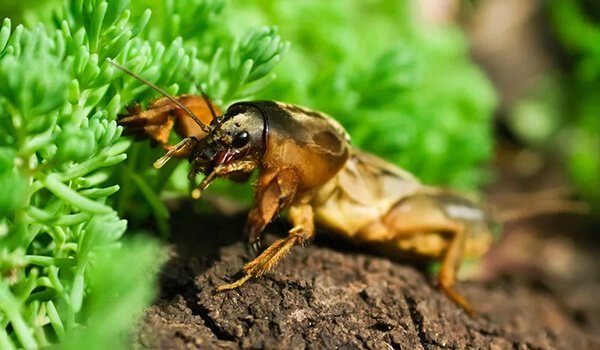

Photo: Bear insect
Medvedka is an omnivorous insect, with its gluttony it resembles a locust. She does not disdain weeds, small insects and spineless.
Features of food Medvedok:
- are distinguished by greed, which causes great harm to the crop;
- destroy the planting of tomatoes, potatoes, cabbage, legumes and melons;
- per day, one individual can gnaw up to 15 plants;
- the larvae eat up the crop that the adults did not have time to eat.
Bears eat all parts of plants: root, aerial part, seeds. In the forest, the insect feeds on the roots of young seedlings of trees and bushes; in summer cottages, all plantings are eaten. They do not disdain even exotic citruses (oranges, tangerines, lemons).
The main food products of the bear are:
- vegetables: potatoes, cabbage, tomatoes, cucumbers, peppers, corn;
- crops of grain crops, soybeans, rice, buckwheat;
- roots of young trees: apple, oak, pine, cherry.
The opinion that the bears are vegetarians is mistaken. 40% of their food is living things. They can eat earthworms and small insects, larvae.
Interesting fact: Kapustyanka can be useful for humans. It exterminates some types of harmful insects, such as the Colorado potato beetle.
In exceptional cases, the bear can become a cannibal when there is an acute food shortage.
Interesting Facts
In Zambia, bears are believed to bring good luck to those who see them. The people of Latin America say they predict rain when they dig the ground. In Japan, they were associated with worms, beetles that declare man's sins to heaven according to the faith of Koushin.
Learn more Formicaria for ants, features of keeping and feeding
Gryllotalpa species have been used as food in West Java, Vietnam, the Philippines, Thailand. They are usually eaten fried along with glutinous rice.
Features of character and lifestyle
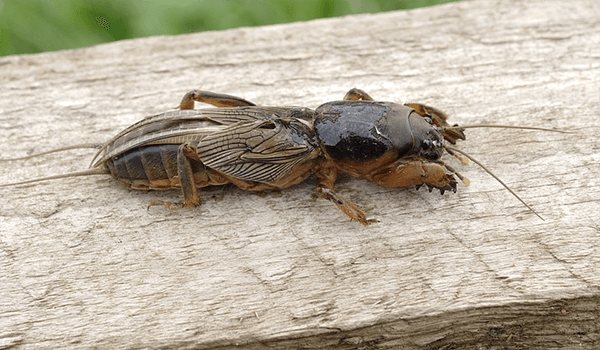

Photo: Bear beetle
The insect can be classified as an active animal. The cabbage is buried, swims and moves pretty quickly. The only thing she does slowly is flies. Basically, she makes flights to find a male for mating.
Medvedka has a good habit of habitat. By nature, this is a mole rat insect. Medvedka spends most of her life underground. During the day, she lives underground, digs passages in the upper layers of the soil, destroying all the plantings that come across her on the way. At night, she comes to the surface in order to change her habitat and find new sources of food.
At first glance, it is difficult to accurately determine the presence of a bear in the garden. But if you study the soil in more detail, then the presence of holes and loosened rollers on the ground indicates the vigorous activity of the bear. Consequently, in the near future, plantings in the zone of its habitat will die.
In search of food, insects can cross large areas of land, fly through the air or swim. The insect was forced to learn to swim, since in spring flood water often floods its habitat. Medvedka is afraid of frost, therefore, in winter, it goes down through holes into the depths, moving to a depth of 1 m. There, where the ground does not freeze. The bear larvae can hibernate at a depth of 50 cm.
Social structure and reproduction
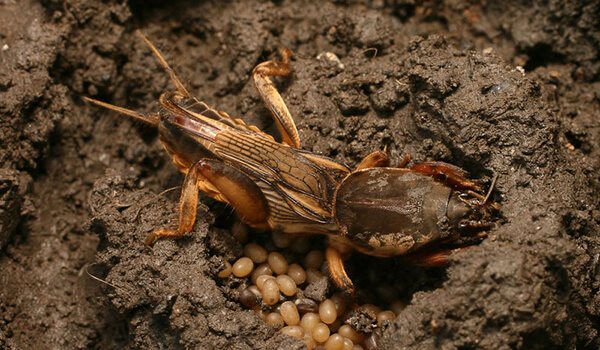

Photo: Medvedka in the garden
After hibernation and emergence from burrows to the surface, the first stage of reproduction begins in bears. In the spring, having chosen a pair, the bears return to their burrows for mating. The offspring appears in the summer. Preparing for future offspring for a male and a female bear takes a lot of time, since they are extremely careful about this. The pair digs out large ornate tunnels at a depth of about five centimeters underground, and create spherical nests up to ten centimeters in diameter, in which, subsequently, the female lays eggs, from three hundred to six hundred pieces.
All the time during the maturation of eggs, the female does not leave the nest, taking care of them. It restores collapsed passages, cleans them from roots, and also controls the temperature required for eggs. This whole process is extremely important for the future offspring of the bear. The eggs of the bear outwardly resemble millet grains, they are oblong, yellow with a gray tint and about two centimeters in size. After twenty days, the larvae hatch, which resemble small creatures with six gray legs. The larvae are small, though.
But outwardly similar to adults. After birth for twenty to thirty days, the female bear, as befits a mother, takes care of the cubs and protects them. At the end of this period, the female dies, and the grown and formed individuals of the bear crawl through the holes and begin an independent life. From calf to full adult, the maturation process takes from one to two and a half years.
Natural enemies of the bear
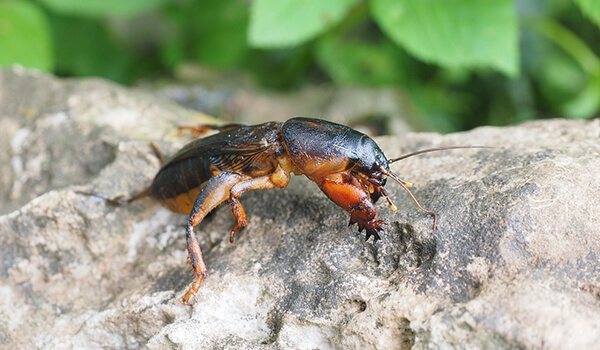

Photo: What a bear looks like
The main enemies of the insect are birds, but not all of them can find the bear underground. But rooks can do it. To do this, they have a powerful beak, with the help of which they tear off the bear and their larvae. Starlings and hoopoes are also capable of hunting for bears. In swampy areas, the stork is the main enemy of the insect.
Bears are also afraid of some animals:
- hedgehog;
- shrews;
- mole;
- lizards.
Some types of insects are also good at destroying the bear population:
- ants that destroy bear eggs;
- ground beetle that eats larvae.
The causative agent of fungal diseases carries a particular danger to the bear population. One of these diseases is caused by Beauveria bassiana, an entomopathogenic fungus that grows in the body of the bear and, releasing toxins, causes the death of the insect.
Interesting fact: Medvedka becomes the carrier of Larra's wasp eggs. To do this, the wasp drives the insect out of the hole, stings, paralyzing the bear, and then lays an egg in its body. After a while, the bear regains consciousness and returns to its hole. Gradually, the wasp larva devours the bear from the inside.
Pets, in particular cats, also do not hesitate to eat bears. They hunt insects like rodents. People not only exterminate the bear, because they harm agricultural plants. Some foodies eat insects. They are stewed, fried and even pickled. Medvedok is used in pharmaceuticals. The crushed bear is added to the medicine for tuberculosis.
Spread
Bears are nocturnal insects and spend most of their lives underground in vast tunnel systems. Most of them are in the area of agricultural land and grassy areas.
The bear is found everywhere, it can be found on all continents, with the exception of Antarctica. By the beginning of 2014, 107 different species of bear have been described and there is a high percentage of the likelihood that even more species will be found, especially in Asia. Neoscapteriscus didactylus is one of the most widespread pests affecting agriculture in South America, the West Indies and New South Wales in Australia. The African bear is one of the main pests in South Africa. Other species are widespread in Europe, Asia and Australia.



